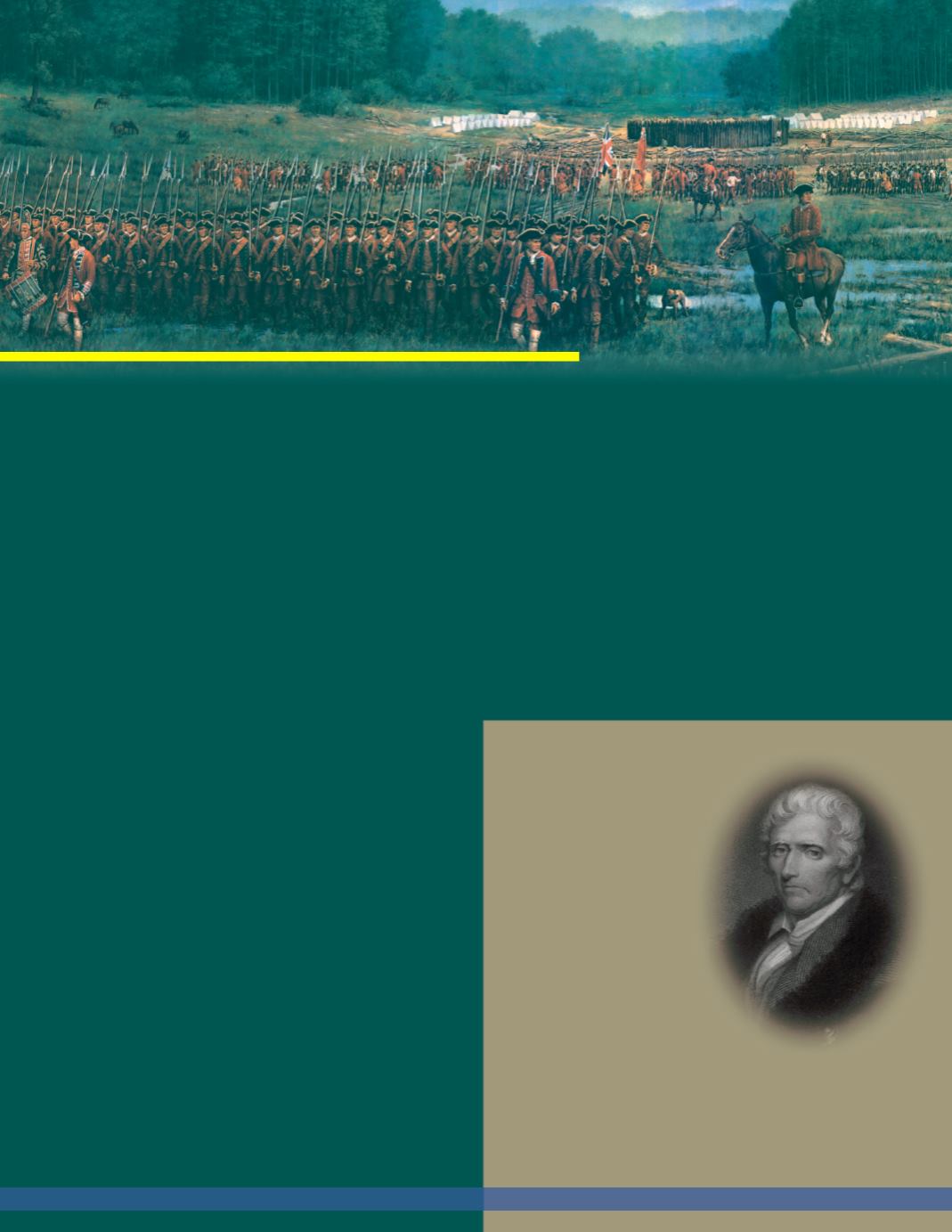
Despite this information, Washington and his
troops were sent back to this region to fortify
another trading post close to Fort Duquesne. They
hadmore than one enemy. Apart from the French
and their Indian allies, Washington’s troops had to
build crude roads through thick forests and rugged
mountain ridges in the Laurel Highlands.
After building the road, Washington set up a
camp in an open field, known as the
Great
Meadows
, about 40miles from the French fort. He
learned from the camp of Native American chief Half-
King, an ally of the English, that a small group of
French soldiers were planning to attack. With a small
group of 40men, Washingtonmarched all night in a
drenching rain. In themorning, he took the
awakening French by surprise in what is known as
the
Battle of Jumonville Glen
. The fight lasted only
15minutes, but Washington’s success had a
tremendous global impact.
This battle started what is known as the
French
and IndianWar
, which was really between the English
and French. This war lasted for nine years in Europe
and six years in North America. The name sounds as if
the French were fighting the Indians. In fact, the British
and the French were fighting for control of the Ohio
River Valley, and on a grander scale, for control of
North America. Both European powers had the help of
the different Native American tribes who originally had
been fighting against each other before the settlers
arrived. What name would you give to this war?
After his surprise victory, Washington and his
troops hurried back to Great Meadows and prepared
for an attack froma larger French force at Fort
Duquesne. He ordered a round fort built in the
meadow, which he called
Fort Necessity
. Several
weeks later, a force of 600 French and 100 Native
Americans attacked his crude fort. In an all-day rain,
Washington’s troops were fired upon fromhigher
ground. Outnumbered and withmany of hismen sick
and wounded, Washington surrendered to the
French. The French allowedWashington and hismen
to return to Virginia without their weapons, and Fort
Necessity was destroyed.
Today, you can visit Fort Necessity National
Battlefield in Fayette County. The rebuilt fort and
battlefield is the only one operated by the National Park
Service that is devoted to the French and IndianWar.
In 1755, the English sent
General Braddock
with
a large army to capture the French Fort Duquesne.
Washington traveled with Braddock’s army as a
military aide. About eight miles from the fort, while
crossing theMonongahela River, Braddock’s army
was attacked. Although he outnumbered the French
and Native Americans three to one, Braddock’s army
was badly beaten.
Following the British colonial army’s victory at the Battle of Jumonville Glen,
GeorgeWashington’s troops returned toGreatMeadows and built Fort Necessity.
44
Understanding Pennsylvania
Daniel Boone, who was
born in Berks County in
1734, became the
most famous
frontiersman
in
American history. He
lived in Pennsylvania for
16 years before his
family moved to North
Carolina. He served with the
British Army during and French
and IndianWar. Later, Boone blazed a trail,
known as theWilderness Road, into
Kentucky in 1775. You can learnmore
about Boone by visiting the Daniel Boone
Homestead on-line.
D
ANIEL
B
OONE
,
Frontiersman


